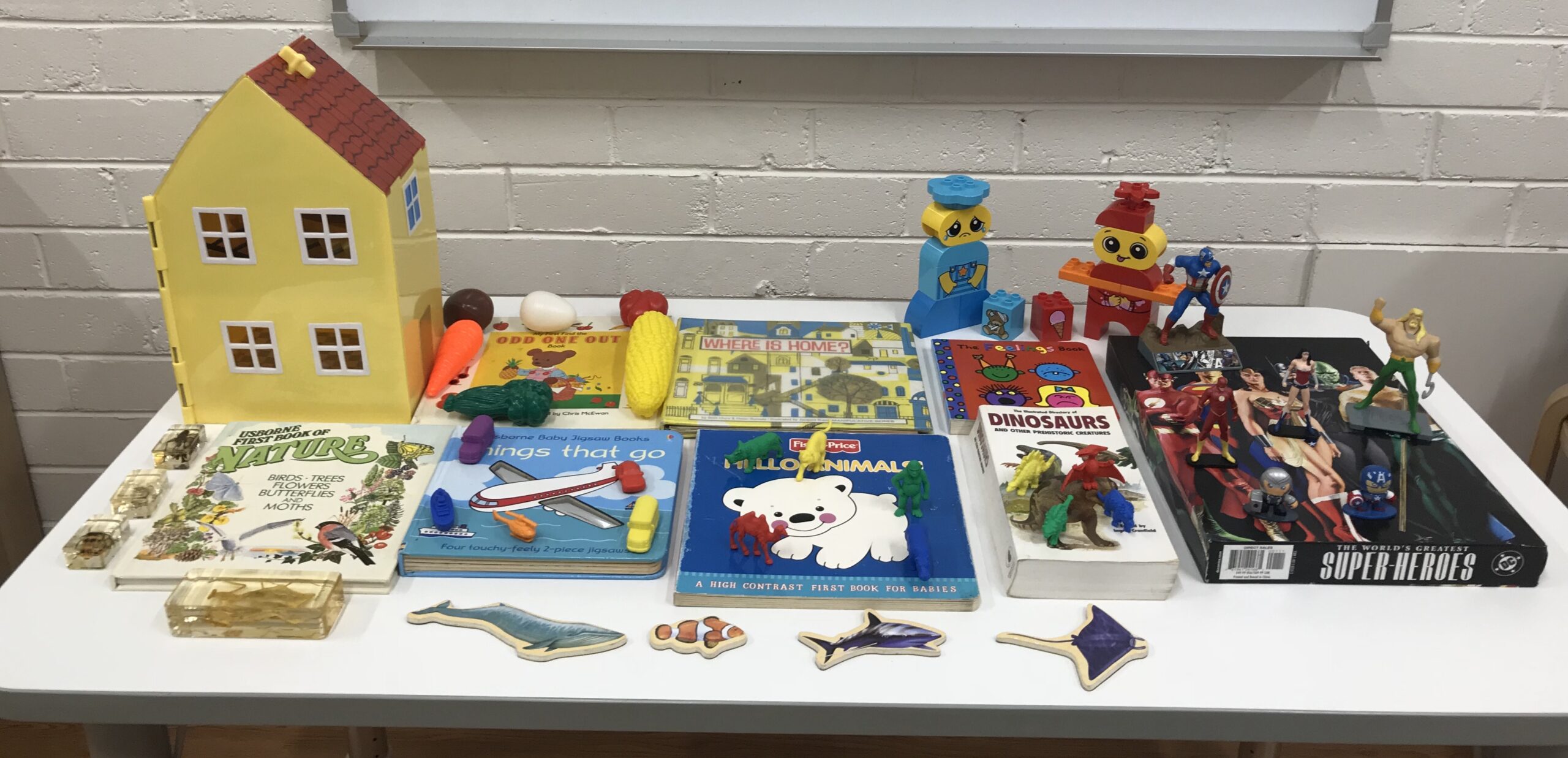To succeed in life – especially in the Information Age – we need to sort out and organise all the information around us.
So how do we learn how to do it?
1. Humans are biologically primed to notice and to categorise some objects
As we’ve discussed in more detail here, some researchers think that humans have evolved several core skills to survive, including:
-
in/out grouping skills to help break our social world into categories of people; and
-
attending to the biological and physical world around us, including knowledge about the “essence” of different species of plants and animals, and how to categorise them.
These natural abilities might be one reason category work usually starts with things that move (e.g. animals and transport) and sustenance (e.g. food and drinks) – even for young city kids who are very unlikely to meet a cheetah (or even a cow), or drink coffee or tea.
2. Categorisation and classification are not the same thing
Broadly speaking, humans have two mains ways of organising information:
-
Categorisation: dividing the world into groups of entities whose members are similar to each other in some way.
-
Classification: systematically assigning each object or entity to one – and only one! – class within a system of mutually exclusive, non-overlapping classes.
3. What’s the difference?
With categorisation, the boundaries are often fuzzy as membership in one group does not prevent the object from also being in another group. In classification, there is generally a hierarchy of well-defined, mutually exclusive, and non-overlapping classes nested in a series of systems and sub-systems.
The difference is probably best illustrated through examples. Think for a moment about a Wedge-tailed Eagle. Or a White Oak Tree. Or a Dyson Cyclone V10 Absolute+.
We can categorise these things in several ways. For example wedge-tailed eagles, white oak trees, and Dyson vacuum cleaners can be sorted by function (things that fly, grow, vacuum), by group (birds, birds of prey, trees, angiosperms, home appliances), by parts (things with talons, roots/leaves, cyclone technology), materials (e.g. feathers/bones, wood, polycarbonate plastic), origin (Australia, Europe, Malaysia) and of course basic perceptual characteristics like size, colour, scent, texture – almost any attribute you can imagine.
But we can only classify each of these things in one way. For example:
|
Scientific classification
|
|
|
Kingdom:
|
|
|
Phylum:
|
|
|
Class:
|
|
|
Order:
|
|
|
Family:
|
|
|
Genus:
|
|
|
Species:
|
A. audax
|
Source: Wikipedia.
(b) Classification of a white oak tree
|
Kingdom:
|
|
|
Clade:
|
|
|
Clade:
|
|
|
Clade:
|
|
|
Order:
|
|
|
Family:
|
|
|
Genus:
|
|
|
Subgenus:
|
|
|
Section:
|
|
|
Species:
|
Q. alba
|
Source: Wikipedia.
(c) Classification of Dyson Cyclone V10 Absolute+
4. How do categorisation and classification skills develop?
The developmental sequence is:
-
comparison; then
-
categorisation; then
-
conceptualisation; and finally,
-
classification.
Categorisation begins in infancy, starting with categorising objects according to basic concepts (e.g. colour and shape). Early categorisation may be purely perceptual (e.g. “these objects look alike”, or “all these things have four legs”), meaning that the child doesn’t necessarily understand the logical relationships among the grouped objects.
Preschoolers:
-
first compare objects, abstracting similarities and differences between objects (e.g. looking at a glass and a mug, noting that we drink from both, but a glass is see-through, and a mug is not);
-
then categorise them – i.e. put them in groups according to “essential” or relevant similarities (e.g. “cups and mugs are things we drink from”).
School-age kids of 5-7 years of age continue to build their knowledge of things, and to organise them into “semantic networks”. Between 7 and 9 years of age, as their vocabulary hits around 5,000 words, children acquire deeper knowledge of abstract categories (e.g. maths and science categories), synonyms, antonyms, and word definitions.
What does this all have to do with language?
Big topic! There is a lot of debate about the relationship(s) between thinking and language. For a full discussion, we recommend checking out Steven Pinker’s The Language Instinct.
Categorisation and classification are usually thought of as basic thinking (cognitive) skills. The way we use a specific language (e.g. English) to understand and to express relationships between objects or events and their meanings is called semantic language. Semantic language, together with vocabulary, comprise the content of our language.
Thinking and language are different things. But, obviously, they interact with each other in several ways, e.g.:
-
Some researchers think that children rely on existing conceptual knowledge when acquiring new language. In other words, kids construct their own language based on categories they have already acquired. Some think that a child’s early concepts of objects, relationships, property, and events provide the building blocks for kids learning new words (e.g. Clark, 2004).
-
The use of “thinking categories” allows kids to learn new words rapidly. Typically, a single word appears in each category, e.g. “hat” under the clothing category; and “car” under the vehicle category. As the child’s vocabulary grows, the child acquires words related to categories he or she already knows. For example, “socks” is added to “hat” under clothing; and “truck” to “car” under vehicles. The transition from single word categories to multiple word categories indicates the child has learned to recognise similarities and differences between items and to arrange them into categories (Dromi & Fishelzon, 1986).
-
The ability to make language generalisations – e.g. that regular past tense verbs end in “ed”, and regular plurals end in “s” – is associated with the ability to make other cognitive generalisations beyond existing conceptual knowledge (Goldberg, 2007).
-
Classification appears to be fundamental to the development of higher order cognitive skills and concepts. Category learning influences simple cognitive functions, like object-to-label associations (e.g. naming an apple) and complex cognitive functions like decision-making (Goldstone & Hendrickson, 2010). Categorisation and classification skills are basic thinking skills that allow creative thinking and analogical reasoning (Gentner and Christie, 2010).
Categories play a fundamental role in analogical thinking (Kaniel, 2001). For example, consider these problems:
To answer these questions (cold, finger), you need to know conceptually about the categories of colours, temperatures, and body parts (and parts of body parts). You also need to know about the meaning and names of opposites (antonyms) and the names for different colours, temperatures and the parts of things.
Analogical reasoning thus involves categorisation, classification, and learning processes, which provide the thinking tools that enable discovery and creative thinking (Goswami, 1992). Analogy is also important for problem solving (Novick & Bassock, 2005), and inductive thinking (Holland et al., 1986).
There is some evidence that classification training can improve language and some higher level thinking skills. For example, working on verbal concepts and classification skills may improve perceptual analogical skills (e.g. Tzuriel et al., 2017).
Clinical bottom line: what to work on
A possible implication of the research cited above is that therapy designed to help kids to compare, categorise and classify may transfer to language gains, and gains in analogical reasoning skills.
For children with semantic language disorders, therapy should:
-
focus first on helping kids to sort concrete objects in categories humans are primed to distinguish (e.g. food v. animals; or people v. transport);
-
then help kids to notice different attributes of objects (size, shape, colour, function, composition, texture, taste, parts, etc) – usually starting with perceptual sorting activities, and moving to more abstract or representational attributes;
-
then help kids to compare and contrast different objects by attributes;
-
then help kids to categorise objects (put them into groups);
-
then teach kids to define and classify objects by reference to attributes; and
-
finally work on higher level language skills like defining words, and analogical reasoning skills.
Principal sources: Tzurierl, D. Isman, E.B., Klung, T., & Haywood, H.C. (2017). Effects of Teaching Classification on Classification, Verbal Conceptualization, and Analogical Reasoning in Children with Developmental Language Delays. Journal of Cognitive Education and Psychology, 16(1), 107-124. Jacob, E.K. (2004). Classification and categorization: A difference that makes a difference. Library Trends, 52, 515-540.

Hi there, I’m David Kinnane.
Principal Speech Pathologist, Banter Speech & Language
Our talented team of certified practising speech pathologists provide unhurried, personalised and evidence-based speech pathology care to children and adults in the Inner West of Sydney and beyond, both in our clinic and via telehealth.

